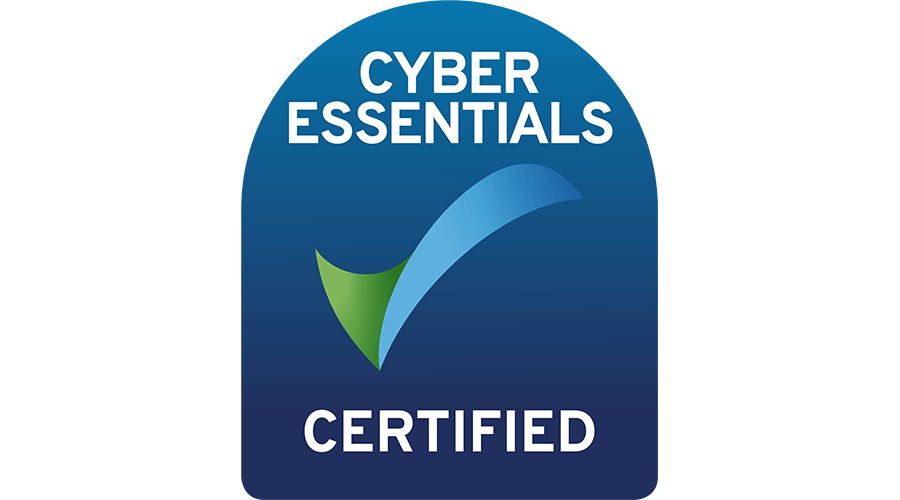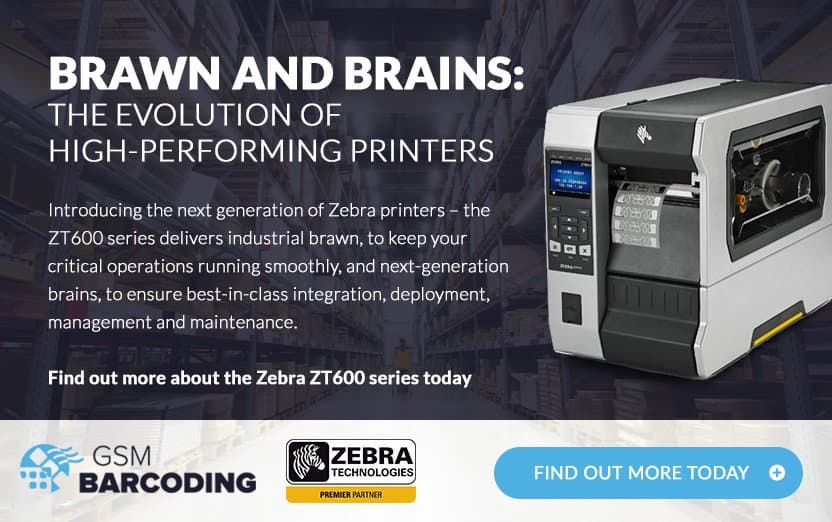Food labels are essential for ensuring the long-term health of consumers. For example, people with allergies to specific ingredients rely upon detailed food labels to protect themselves. Additionally, the nutritional data on these labels helps consumers monitor their calorie intake and the amounts of unhealthy ingredients they have daily.
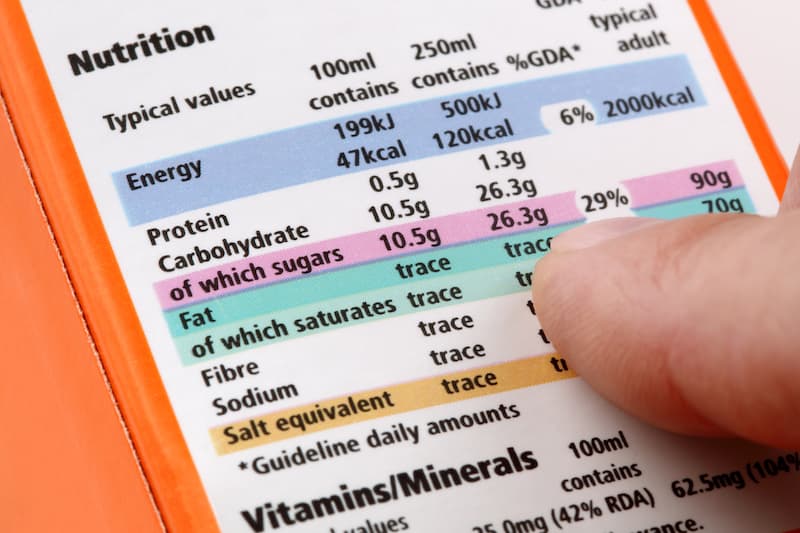
Labels are excellent informative tools but knowing what to add in a small space is essential. It would help if you considered what your label should communicate to the consumer and balanced it with the aesthetics of your brand. Having a perfectly designed label means little if it doesn’t last. Food manufacturers depend on durable labels that will last until the package is disposed of.
Government Guidance
The UK government supplies a significant amount of information about how food labels should be presented. The definition of pre-packaged food is any food that is ‘packaged before a sale’ and ‘cannot be altered without opening it’.
Food Label Mandatory Requirements
Every food product should have a label on its packaging with the following details:
- The foods name
- Quantitive ingredients declaration (QUID)
- Ingredients list, with highlighted allergens
- The net quantity weight or volume
- The ‘best before’ or ‘use by date
- The Address of the food business operator (FBO) responsible for this information
- The alcoholic content in a percentage (only on drinks over 1.2%)
This information must be easy to find and clear to read on your products. Additional features such as organic food can be added to promote your product, but it must be verifiable
What Makes a Great Food Label?
Adaptability
Food packaging comes in all shapes and sizes, particularly with the increasing number of small manufacturers dedicated to hand-made produce. An excellent food label should be customised to suit the packaging.
Forcing the wrong label to fit will cause problems later on. For example, an overly large label will be susceptible to peeling over time or ruin the aesthetic by covering your branding.
Our cutting-edge digital printers can customise your labels to suit any product’s dimensions and specifications. We also offer data integration options along with your choice of printed data or barcodes.
Reliability
You must have confidence in your food labels to withstand the different conditions they will be subjected to. For example, staff and customers will handle jars and tins many times before being sold, and their labels will need to be undamaged by this.
When choosing your labels, you need to consider where the food products will be stored. Chilled and frozen containers will be subjected to wildly changing temperatures, creating moisture through condensation and threatening the integrity of weaker labels.
Waterproof packaging labels are ideal for cold storage, and we can even provide detailed labels made from polypropylene, a far more resistant material than paper.
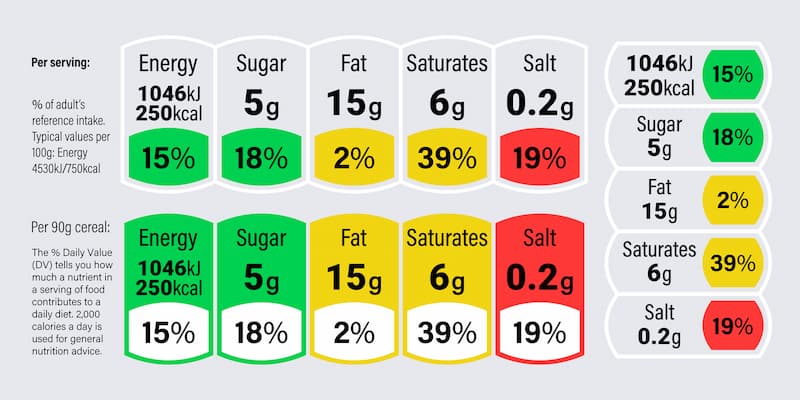
Traffic Light Food Labels
The traffic light system was introduced in 2014 as part of wider-ranging initiative to improve public health. In the UK, it is common to see a traffic light labelling system that dictates the associated foods’ fat, saturated fat, sugars and salt contents. You can also find out the calories and kilojoules within that food product.
This label design gives the consumer an idea of streamlining complex nutritional stats into a more straightforward format to understand. They can make an informed purchase using green, orange and red colours to indicate the percentage of these unhealthy elements.
Unfortunately, the success of this system is unclear. The colour system’s simplistic nature can create confusion, as consumers might not know why the red indicator is there. For example, 100ml of orange juice or a soft drink will have a similar amount of sugar in them, promoting a red marker, but the juice drink will contribute to your vitamin C intake and one of your five a day, whereas the soft drink provides none of these benefits.
Many nutritional groups are exploring new ways of presenting this vital information, with one organisation exploring exercise-based labels.
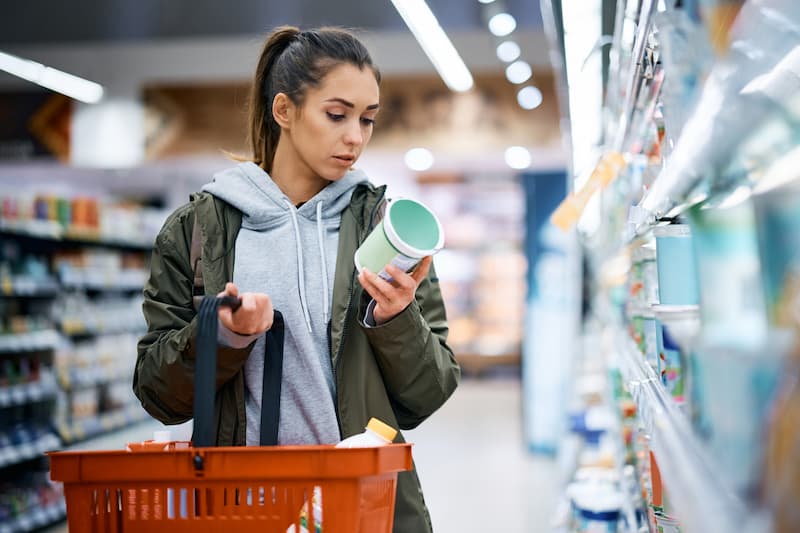
Exercise Based Food Labels
All packaged food is required to display nutritional information about the contents, but a study by Loughborough University has shown the benefits of adding exercise-related data to these labels. The study explored the potential of physical activity calorie equivalent (PACE) labelling for helping people.
The PACE label is designed to approach it in a more contextualised way. Using symbols and icons, these labels indicate how much energy expenditure is required to compensate for it. This method reduces calorie counts by quickly putting those calories into perspective. For example, a soft drink at 150 calories would take 30 minutes of walking to burn off.
One notable difference between these labels and the traffic light system is their popularity with younger people. The study discovered that people under 65 were more receptive to calorie counts displayed in this digestible way.
Food Label Production at GSM Barcoding
GSM Barcoding manufactures the highest quality food labels that can be adapted to suit a broad range of packaging and storage environments. We also supply professional grade label printing software to allow small businesses to print their labels in-house.















